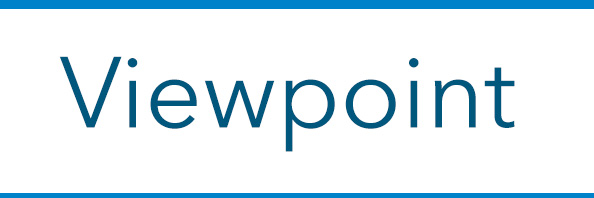Technology is a double-edged sword: The more it can do, the more complex knowledge we need to use it.

In fact, a 2023 study from Deloitte found that nearly 90% of technology leaders interviewed cited recruiting as their biggest challenge. What’s more, companies are about to witness an exodus of existing talent: Baby Boomers will all be at least 65 by 2030 — an entire generation, retired.
Why is this a problem? Without a steady stream of new talent pouring into these vacant tech jobs, business will suffer. The economy will suffer. And people who could develop the skills necessary to land a good job, won’t — because they lack the finances, confidence and/or accessible learning opportunities.
It turns out the solution has been staring us in the face for over a century: community colleges. After 30 years of working in higher education, I’ve grown tired of seeing these institutions overlooked and underutilized. Students who attend community college are eager to learn and hungry for employment.
For them, we can do better. With vision, versatility and collaboration, community colleges can become global centers for technology workforce innovation, identifying and delivering smart solutions to address the ever-growing tech-talent gap. That’s what we’re doing at Hudson Valley Community College (HVCC).
I’ll share the blueprint with you, in three core steps.
Understand what the market needs.
Invest in qualitative and quantitative research. Become intimately familiar with state surveys and national workforce trends. Talk to your area’s top tech employers. Where are the jobs, and how can you help?
Take New York State: The Department of Labor’s most recent Workforce Development Survey found a major need for awareness and training in the skilled trades. And the most difficult positions to fill? CNC machinist, CDL driver, mechanic, electrician and engineer, to name a few.
However, it’s also been reported that the U.S. semiconductor industry could face a shortage of up to 90,000 workers over the next few years.
With this information, community colleges can align their educational offerings (think degrees, certificates and microcredentials), recruit the right faculty and teach the necessary skills to meet pressing workforce needs.
Create partnerships, beginning in your backyard.
Knowing that many of our students live and want to continue to work in this area, we do all we can to provide them with the education and training they need while also filling talent gaps in local industries.
One of our more recent partnerships is with GlobalFoundries (GF), one of the world’s leading semiconductor manufacturers, headquartered here in New York’s Capital Region. HVCC partnered with GF for instruction related to GF’s specific needs, creating the first national apprenticeship program of its kind in the U.S.
Now, GlobalFoundries has become an important donor for the Applied Technology Education Center (ATEC) we’re building on HVCC’s campus, a 130,000-square-foot, $85-million workforce training center where we’ll prepare graduates for in-demand careers in building systems, automotive and transportation technology, renewable energy and semiconductor manufacturing industries.
“GlobalFoundries is extremely proud of our close partnership with Hudson Valley Community College to teach the advanced skills necessary for careers in the semiconductor industry,” said Hui Peng Koh, vice president and general manager of GF’s New York facility. “We have recently demonstrated our support for our workforce training partnership by making the largest donation in our history, $1 million, to enable HVCC to expand the training of a new generation of skilled workers.”
We’re also proud of our 15+ year relationship with National Grid, which serves the electric and gas needs of more than 20 million people throughout New York and Massachusetts. Through our partnership, HVCC is training students for employment in the energy sector. At the same time, we’re helping the state achieve its goal of a sustainable future.
Go global.
While regional partnerships are critical, community colleges are well-positioned to expand their horizons and forge international partnerships. As an immigrant from Trinidad, I can tell you that the tech-talent gap we have in America pales in comparison to other countries.
At HVCC, we’ve established an innovative partnership with the Ministry of Public Education of the Republic of Costa Rica. One aspect of this partnership involves educating young girls in Costa Rica in the areas of science, technology, engineering, arts and math. Not only do these countries gain valuable resources to help further their economy, but our students are also provided with an enriched educational experience.
We’ve also launched a global classroom, allowing international high school students to take our courses. We’ve had applications from many eager students from places like Armenia, Russia, Pakistan, Qatar and Turkmenistan.
As a board member of the World Federation of Colleges and Polytechnics, I strongly believe that global connections enable U.S. community colleges to gain insight and build meaningful relationships that lead to actionable opportunities — for our students and our future.
Consistent with that philosophy, HVCC was inaugurated in April into the UNESCO-UNEVOC International Centre for Technical and Vocational Education and Training — the United Nations’ educational, scientific and cultural organization — to advance technical and vocational education and training across the globe. Hudson Valley is honored to have been chosen as the first community college in the United States to join this prestigious global network and to share our knowledge and skills, especially in preparing tomorrow’s workforce now.
Community colleges 2.0
Community colleges have always served as an accessible and affordable option for students planning to complete their education at a four-year institution or to upskill in their chosen field. While we will continue to lead in that way, we’re capable of so much more.
As American poet and author Tuli Kupferberg once said, “When patterns are broken, new worlds emerge.”
By expanding our mission and becoming global centers for technology workforce innovation, community colleges are in a position to thrive, leading the nation in forging strategic partnerships with industry, educating students in cutting-edge fields and playing our part in ensuring we’re filling and fueling the workforce of today and tomorrow.





